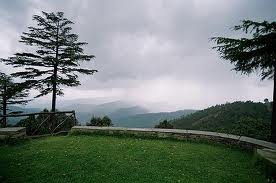The township of Lonar is one of the well known tourist destinations in the state of Maharashtra. Lonar lies at an signify elevation of 563 m. A famed place visited in the Buldhana locality, it is frequented by tourists and pilgrims alike, as it characteristics some very vintage shrines and tourism sites.
The district was a part of the Vidarbha Kingdom as cited in Mahabharata. varied dynasties administered the district including Mauryan, Ashoka, Satavahana, Vakataka, Chalukya, Rashtrakuta and Yadava. In the 14th years, Muslim rule begun when Alauddin Khilji conquered the district. The location visited was under the direct of Mughals throughout the 16th century, and by the 19th century, it came under the administration of the British East India enterprise.
According to historians, the Lonar Crater was mainly found out in 1823 by British overseer, J.E. Alexander, while the location has several mentions in ancient scripts, which encompass the Skanda Puran, the Padma Puran and the Aaina-i-Akbari.
A saline water lake in basaltic rock, renowned as Lonar Crater and lagoon, stands on the position of the crater. wealthy in flora and fauna, the location is a environment of some species of birds. The adoration centre, Daitya Sudan Temple, which is constructed equal to Khajuraho temples, is a famous location of Lonar. Motha Maruti, a shrine dedicated to Lord Hanuman, is constructed round a magnetic rock that was formed by hypervelocity meteorite leverage.
The village hosts a equitable called Chaitra Masa Suklapaksha Navami at Shegaon on Rama Navami throughout the months of stride or April every year. The heritage of the place visited can be glimpsed in its folk creative pursuits encompassing Bhajan, Kirtan and Gondhal. The foremost dialects voiced are Korku, Hindi and Marathi.
The district was a part of the Vidarbha Kingdom as cited in Mahabharata. varied dynasties administered the district including Mauryan, Ashoka, Satavahana, Vakataka, Chalukya, Rashtrakuta and Yadava. In the 14th years, Muslim rule begun when Alauddin Khilji conquered the district. The location visited was under the direct of Mughals throughout the 16th century, and by the 19th century, it came under the administration of the British East India enterprise.
According to historians, the Lonar Crater was mainly found out in 1823 by British overseer, J.E. Alexander, while the location has several mentions in ancient scripts, which encompass the Skanda Puran, the Padma Puran and the Aaina-i-Akbari.
A saline water lake in basaltic rock, renowned as Lonar Crater and lagoon, stands on the position of the crater. wealthy in flora and fauna, the location is a environment of some species of birds. The adoration centre, Daitya Sudan Temple, which is constructed equal to Khajuraho temples, is a famous location of Lonar. Motha Maruti, a shrine dedicated to Lord Hanuman, is constructed round a magnetic rock that was formed by hypervelocity meteorite leverage.
The village hosts a equitable called Chaitra Masa Suklapaksha Navami at Shegaon on Rama Navami throughout the months of stride or April every year. The heritage of the place visited can be glimpsed in its folk creative pursuits encompassing Bhajan, Kirtan and Gondhal. The foremost dialects voiced are Korku, Hindi and Marathi.













































